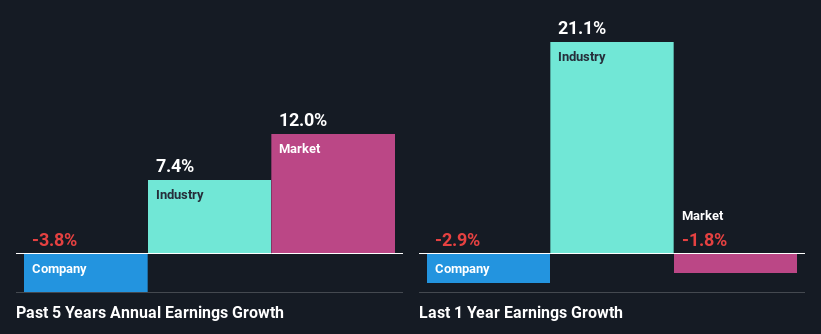It is hard to get excited after looking at Knorr-Bremse’s (ETR:KBX) recent performance, when its stock has declined 13% over the past three months. However, the company’s fundamentals look pretty decent, and long-term financials are usually aligned with future market price movements. Particularly, we will be paying attention to Knorr-Bremse’s ROE today.
Return on equity or ROE is a key measure used to assess how efficiently a company’s management is utilizing the company’s capital. In simpler terms, it measures the profitability of a company in relation to shareholder’s equity.
See our latest analysis for Knorr-Bremse
How Do You Calculate Return On Equity?
Return on equity can be calculated by using the formula:
Return on Equity = Net Profit (from continuing operations) ÷ Shareholders’ Equity
So, based on the above formula, the ROE for Knorr-Bremse is:
20% = €530m ÷ €2.7b (Based on the trailing twelve months to June 2023).
The ‘return’ refers to a company’s earnings over the last year. So, this means that for every €1 of its shareholder’s investments, the company generates a profit of €0.20.
What Has ROE Got To Do With Earnings Growth?
So far, we’ve learned that ROE is a measure of a company’s profitability. We now need to evaluate how much profit the company reinvests or “retains” for future growth which then gives us an idea about the growth potential of the company. Assuming all else is equal, companies that have both a higher return on equity and higher profit retention are usually the ones that have a higher growth rate when compared to companies that don’t have the same features.
A Side By Side comparison of Knorr-Bremse’s Earnings Growth And 20% ROE
To begin with, Knorr-Bremse seems to have a respectable ROE. On comparing with the average industry ROE of 14% the company’s ROE looks pretty remarkable. As you might expect, the 3.8% net income decline reported by Knorr-Bremse is a bit of a surprise. We reckon that there could be some other factors at play here that are preventing the company’s growth. Such as, the company pays out a huge portion of its earnings as dividends, or is faced with competitive pressures.
So, as a next step, we compared Knorr-Bremse’s performance against the industry and were disappointed to discover that while the company has been shrinking its earnings, the industry has been growing its earnings at a rate of 7.4% over the last few years.
Earnings growth is an important metric to consider when valuing a stock. The investor should try to establish if the expected growth or decline in earnings, whichever the case may be, is priced in. Doing so will help them establish if the stock’s future looks promising or ominous. Is KBX fairly valued? This infographic on the company’s intrinsic value has everything you need to know.
Is Knorr-Bremse Efficiently Re-investing Its Profits?
Looking at its three-year median payout ratio of 48% (or a retention ratio of 52%) which is pretty normal, Knorr-Bremse’s declining earnings is rather baffling as one would expect to see a fair bit of growth when a company is retaining a good portion of its profits. It looks like there might be some other reasons to explain the lack in that respect. For example, the business could be in decline.
Additionally, Knorr-Bremse has paid dividends over a period of four years, which means that the company’s management is rather focused on keeping up its dividend payments, regardless of the shrinking earnings. Upon studying the latest analysts’ consensus data, we found that the company is expected to keep paying out approximately 48% of its profits over the next three years. As a result, Knorr-Bremse’s ROE is not expected to change by much either, which we inferred from the analyst estimate of 20% for future ROE.
Summary
On the whole, we do feel that Knorr-Bremse has some positive attributes. However, given the high ROE and high profit retention, we would expect the company to be delivering strong earnings growth, but that isn’t the case here. This suggests that there might be some external threat to the business, that’s hampering its growth. That being so, the latest industry analyst forecasts show that the analysts are expecting to see a huge improvement in the company’s earnings growth rate. To know more about the latest analysts predictions for the company, check out this visualization of analyst forecasts for the company.
Have feedback on this article? Concerned about the content? Get in touch with us directly. Alternatively, email editorial-team (at) simplywallst.com.
This article by Simply Wall St is general in nature. We provide commentary based on historical data and analyst forecasts only using an unbiased methodology and our articles are not intended to be financial advice. It does not constitute a recommendation to buy or sell any stock, and does not take account of your objectives, or your financial situation. We aim to bring you long-term focused analysis driven by fundamental data. Note that our analysis may not factor in the latest price-sensitive company announcements or qualitative material. Simply Wall St has no position in any stocks mentioned.
